Biomarkers as point-of-care tests to guide prescription of antibiotics in people with acute respiratory infections in primary care
- PMID: 36250577
- PMCID: PMC9575154
- DOI: 10.1002/14651858.CD010130.pub3
Biomarkers as point-of-care tests to guide prescription of antibiotics in people with acute respiratory infections in primary care
Abstract
Background: Acute respiratory infections (ARIs) are by far the most common reason for prescribing an antibiotic in primary care, even though the majority of ARIs are of viral or non-severe bacterial aetiology. It follows that in many cases antibiotic use will not be beneficial to a patient's recovery but may expose them to potential side effects. Furthermore, limiting unnecessary antibiotic use is a key factor in controlling antibiotic resistance. One strategy to reduce antibiotic use in primary care is point-of-care biomarkers. A point-of-care biomarker (test) of inflammation identifies part of the acute phase response to tissue injury regardless of the aetiology (infection, trauma, or inflammation) and may be used as a surrogate marker of infection, potentially assisting the physician in the clinical decision whether to use an antibiotic to treat ARIs. Biomarkers may guide antibiotic prescription by ruling out a serious bacterial infection and help identify patients in whom no benefit from antibiotic treatment can be anticipated. This is an update of a Cochrane Review first published in 2014.
Objectives: To assess the benefits and harms of point-of-care biomarker tests of inflammation to guide antibiotic treatment in people presenting with symptoms of acute respiratory infections in primary care settings regardless of patient age.
Search methods: We searched CENTRAL (2022, Issue 6), MEDLINE (1946 to 14 June 2022), Embase (1974 to 14 June 2022), CINAHL (1981 to 14 June 2022), Web of Science (1955 to 14 June 2022), and LILACS (1982 to 14 June 2022). We also searched three trial registries (10 December 2021) for completed and ongoing trials.
Selection criteria: We included randomised controlled trials (RCTs) in primary care patients with ARIs that compared the use of point-of-care biomarkers with standard care. We included trials that randomised individual participants, as well as trials that randomised clusters of patients (cluster-RCTs).
Data collection and analysis: Two review authors independently extracted data on the following primary outcomes: number of participants given an antibiotic prescription at index consultation and within 28 days follow-up; participant recovery within seven days follow-up; and total mortality within 28 days follow-up. We assessed risk of bias using the Cochrane risk of bias tool and the certainty of the evidence using GRADE. We used random-effects meta-analyses when feasible. We further analysed results with considerable heterogeneity in prespecified subgroups of individual and cluster-RCTs.
Main results: We included seven new trials in this update, for a total of 13 included trials. Twelve trials (10,218 participants in total, 2335 of which were children) evaluated a C-reactive protein point-of-care test, and one trial (317 adult participants) evaluated a procalcitonin point-of-care test. The studies were conducted in Europe, Russia, and Asia. Overall, the included trials had a low or unclear risk of bias. However all studies were open-labelled, thereby introducing high risk of bias due to lack of blinding. The use of C-reactive protein point-of-care tests to guide antibiotic prescription likely reduces the number of participants given an antibiotic prescription, from 516 prescriptions of antibiotics per 1000 participants in the control group to 397 prescriptions of antibiotics per 1000 participants in the intervention group (risk ratio (RR) 0.77, 95% confidence interval (CI) 0.69 to 0.86; 12 trials, 10,218 participants; I² = 79%; moderate-certainty evidence). Overall, use of C-reactive protein tests also reduce the number of participants given an antibiotic prescription within 28 days follow-up (664 prescriptions of antibiotics per 1000 participants in the control group versus 538 prescriptions of antibiotics per 1000 participants in the intervention group) (RR 0.81, 95% CI 0.76 to 0.86; 7 trials, 5091 participants; I² = 29; high-certainty evidence). The prescription of antibiotics as guided by C-reactive protein tests likely does not reduce the number of participants recovered, within seven or 28 days follow-up (567 participants recovered within seven days follow-up per 1000 participants in the control group versus 584 participants recovered within seven days follow-up per 1000 participants in the intervention group) (recovery within seven days follow-up: RR 1.03, 95% CI 0.96 to 1.12; I² = 0%; moderate-certainty evidence) (recovery within 28 days follow-up: RR 1.02, 95% CI 0.79 to 1.32; I² = 0%; moderate-certainty evidence). The use of C-reactive protein tests may not increase total mortality within 28 days follow-up, from 1 death per 1000 participants in the control group to 0 deaths per 1000 participants in the intervention group (RR 0.53, 95% CI 0.10 to 2.92; I² = 0%; low-certainty evidence). We are uncertain as to whether procalcitonin affects any of the primary or secondary outcomes because there were few participants, thereby limiting the certainty of evidence. We assessed the certainty of the evidence as moderate to high according to GRADE for the primary outcomes for C-reactive protein test, except for mortality, as there were very few deaths, thereby limiting the certainty of the evidence.
Authors' conclusions: The use of C-reactive protein point-of-care tests as an adjunct to standard care likely reduces the number of participants given an antibiotic prescription in primary care patients who present with symptoms of acute respiratory infection. The use of C-reactive protein point-of-care tests likely does not affect recovery rates. It is unlikely that further research will substantially change our conclusion regarding the reduction in number of participants given an antibiotic prescription, although the size of the estimated effect may change. The use of C-reactive protein point-of-care tests may not increase mortality within 28 days follow-up, but there were very few events. Studies that recorded deaths and hospital admissions were performed in children from low- and middle-income countries and older adults with comorbidities. Future studies should focus on children, immunocompromised individuals, and people aged 80 years and above with comorbidities. More studies evaluating procalcitonin and potential new biomarkers as point-of-care tests used in primary care to guide antibiotic prescription are needed. Furthermore, studies are needed to validate C-reactive protein decision algorithms, with a specific focus on potential age group differences.
Trial registration: ClinicalTrials.gov NCT01794819 NCT00221351.
Copyright © 2022 The Cochrane Collaboration. Published by John Wiley & Sons, Ltd.
Conflict of interest statement
Siri Aas Smedemark: declared that she has no conflict of interest.
Carl Llor: the public institution CL works for has received funding in the form of grants from a company producing C‐reactive protein tests and products.
Rune Aabenhus: RA has received speaker fees from two companies, including one company producing procalcitonin tests. Additionally, RA was primary investigator in a trial receiving funding in the form of procalcitonin kits and assays from the manufacturer. The trial was closed down (October 2021) due to delays related to the COVID‐19 pandemic. RA is involved in a trial using C‐reactive protein to guide antibiotic treatment in children in Kyrgyz Republic. The trial is estimated to start in the second half of 2022.
Anders Fournaise: declared that he has no conflict of interest.
Ole Olsen: declared that he has no conflict of interest.
Karsten Juhl Jørgensen: declared that he has no conflict of interest.
Figures




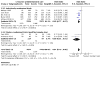

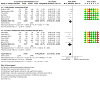
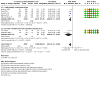
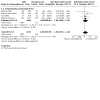
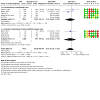
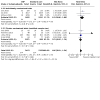
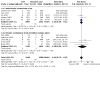
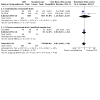
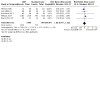
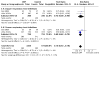
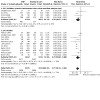
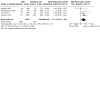
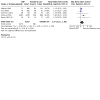
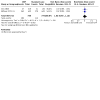
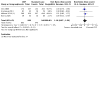

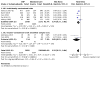
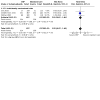


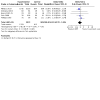
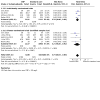
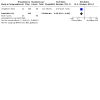

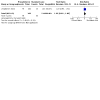

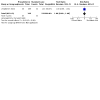

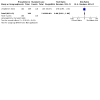
Update of
-
Biomarkers as point-of-care tests to guide prescription of antibiotics in patients with acute respiratory infections in primary care.Cochrane Database Syst Rev. 2014 Nov 6;(11):CD010130. doi: 10.1002/14651858.CD010130.pub2. Cochrane Database Syst Rev. 2014. Update in: Cochrane Database Syst Rev. 2022 Oct 17;10:CD010130. doi: 10.1002/14651858.CD010130.pub3. PMID: 25374293 Updated.
Comment in
-
Guiding Prescription of Antibiotics in People With Acute Respiratory Infections: Biomarkers as Point-of-Care Tests.Am Fam Physician. 2023 Jul;108(1):24-25. Am Fam Physician. 2023. PMID: 37440733 No abstract available.
References
References to studies included in this review
Althaus 2019 {published and unpublished data}
-
- Althaus T, Greer RC, Swe MM, Cohen J, Tun NN, Heaton J, et al. Effect of point-of-care C-reactive protein testing on antibiotic prescription in febrile patients attending primary care in Thailand and Myanmar: an open-label, randomised, controlled trial. Lancet Global Health 2019;7:e119-31. - PMC - PubMed
Andreeva 2013 {published and unpublished data}
Boere 2021 {published data only}
Butler 2019 {published data only}
-
- Butler CC, Gillespie D, White P, Bates J, Lowe R, Thomas-Jones E, et al. C-reactive protein testing to guide antibiotic prescribing for COPD exacerbations. PACE Study. New England Journal of Medicine 2019;381:111-20. - PubMed
Cals 2009 {published data only}85154857
Cals 2010 {published data only}
Diederichsen 2000 {published and unpublished data}
-
- Diederichsen HZ, Skamling M, Diederichsen A, Grinsted P, Antonsen S, Petersen PH, et al. Randomised controlled trial of CRP rapid test as a guide to treatment of respiratory infections in general practice. Scandinavian Journal of Primary Health Care 2000;18:39-43. - PubMed
Do 2016 {published data only}
-
- Do NT, Ta NT, Tran NT, Than HM, Vu BT, Hoang LB, et al. Point-of-care C-reactive protein testing to reduce inappropriate use of antibiotics for non-severe acute respiratory infections in Vietnamese primary health care: a randomised controlled trial. Lancet Global Health 2016;4:e633–41. - PMC - PubMed
Lhopitallier 2021 {published data only}
-
- Lhopitallier L, Kronenberg A, Meuwly J, Locatelli I, Mueller Y, Senn N, et al. Procalcitonin and lung ultrasonography point-of-care testing to determine antibiotic prescription in patients with lower respiratory tract infection in primary care: pragmatic cluster randomised trial. BMJ 2021;374:n2132. [DOI: 10.1136/bmj.n2132] - DOI - PMC - PubMed
Little 2013a {published data only (unpublished sought but not used)}99871214
-
- Little P, Stuart B, Francis N, Tonkin-Crine S, Douglas E, Anthierens S, et al. The effect of web-based training in communication skills and an interactive patient booklet and the use of a CRP point of care test in acute respiratory tract infection (RTI): a multi-national cluster randomised factorial controlled trial. Lancet 2013;382(9899):1175-82. - PMC - PubMed
Little 2019 {published data only}
-
- Little P, Stuart B, Francis N, Douglas E, Tonkin-Crine S, Anthierens S, et al, GRACE consortium. Antibiotic prescribing for acute respiratory tract infections 12 months after communication and CRP training: a randomized trial. Annals of Family Medicine 2019;17(2):125-32. [DOI: 10.1370/afm.2356] - DOI - PMC - PubMed
Melbye 1995 {published and unpublished data}
-
- Melbye H, Aaraas I, Fleten N, Kolstrup N, Mikalsen J-I. The value of C-reactive protein testing in suspected lower respiratory tract infections. A study from general practice on the effect of a rapid test on antibiotic research and course of the disease in adults [Nytten av å teste C-reaktivt protein ved mulig nedre luftveisinfeksjon. En undersøkelse fran allmennpraksis av en hurtigtests innvirkning på antibiotikaforskrivning og sykdomsforløp hos voksne]. Tidsskrift for Norske Laegeforeningen 1995;115(13):1610-5. - PubMed
Schot 2018 {published data only}
-
- Schot MJ, Van den Bruel A, Broekhuizen BD, Cals JW, Noteboom EA, Balemans W, et al. Point-of-care C-reactive protein to assist in primary care management of children with suspected non-serious lower respiratory tract infection: a randomised controlled trial. BJGP Open 2018;2(3):1-10. [DOI: 10.3399/bjgpopen18X101600] - DOI - PMC - PubMed
References to studies excluded from this review
Ameyaw 2014 {published data only}
Briel 2008a {published data only}73182671
-
- Briel M, Schuertz P, Mueller B, Young J, Schild U, Nusbarmer C, et al. Procalcitonin-guided antibiotic use vs. standard approach for acute respiratory tract infections in primary care. Archives of Internal Medicine 2008;168(18):2000-7. - PubMed
Burkhardt 2010a {published data only}
-
- Burkhardt O, Ewig S, Haagen U, Giersdorf S, Hartmann O, Wescheider K, et al. Procalcitonin guidance and reduction of antibiotic use in acute respiratory care. European Respiratory Journal 2010;36(3):601-7. - PubMed
Dahler‐Eriksen 1999 {published data only}
-
- Dahler-Eriksen BS, Lauritzen T, Lassen JF, Lund ED, Brandslund I. Near-patient test for C-reactive protein in general practice: assessment of clinical, organizational, and economic outcomes. Clinical Chemistry 1999;45(4):478-85. - PubMed
de Lusignan 2020 {published data only}
Eley 2020 {published data only}
-
- Eley CV, Sharma A, Lee H, Charlett A, Owens R, McNulty CA. Effects of primary care C-reactive protein point-of-care testing on antibiotic prescribing by general practice staff: pragmatic randomised controlled trial, England, 2016 and 2017. Euro Surveillance 2020;25(44):1-11. [DOI: 10.2807/1560-7917.ES.2020.25.44.1900408] - DOI - PMC - PubMed
Fiore 2017 {published data only}
-
- Fiore D. Procalcitonin to guide antibiotic therapy for acute respiratory infections. Internal Medicine Alert 2017;39:1-2.
Gonzales 2011 {published data only}
-
- Gonzales R, Aagaard EM, Camargo CA Jr, Ma OJ, Plautz M, Maselli JH, et al. C-reactive protein testing does not decrease antibiotic use for acute cough illness when compared to a clinical algorithm. Journal of Emergency Medicine 2011;41(1):1-7. - PubMed
Huang 2018 {published data only}
Isa 2022 {published data only}
Kavanagh 2011 {published data only}
Keitel 2017 {published data only}
-
- Keitel K, Kagoro F, Samaka J, Masimba J, Said Z, Temba H, et al. A novel electronic algorithm using host biomarker point-of-care tests for the management of febrile illnesses in Tanzanian children (e-POCT): a randomized, controlled non-inferiority trial. PLOS Medicine 2017;23(14):e1002411. [DOI: 10.1371/journal.pmed.1002411] - DOI - PMC - PubMed
Little 2014 {published data only}
-
- Little P, Hobbs R, Moore M, Mant D, Williamson I. PRImary Care Streptococcal Management Study (PRISM): in vitro study, diagnostic cohorts, and a pragmatic adaptive randomised controlled trial with nested qualitative study and cost-effectiveness study. Health Technology Assessement 2014;18(6):1-101. [DOI: 10.3310/hta18060] - DOI - PMC - PubMed
Llor 2012 {published data only}
-
- Llor C, Bjerrum L, Arranz J, Garcia G, Cots JM, Gonzalez BL-V, et al. C-reactive protein testing in patients with acute rhinosinusitis leads to a reduction in antibiotic use. Family Practice 2012;29(6):653-8. - PubMed
Mann 2020 {published data only}
-
- Mann D, Hess R, McGinn T, Richardson S, Jones S, Palmisano J, et al. Impact of clinical decision support on antibiotic prescribing for acute respiratory infections: a cluster randomized implementation trial. Journal of General Internal Medicine 2020;35:788-95. [DOI: 10.1007/s11606-020-06096-3] - DOI - PMC - PubMed
Meili 2016 {published data only}
-
- Meili M, Kutz A, Briel M, Christ-Crain M, Bucher HC, Mueller B, et al. Infection biomarkers in primary care patients with acute respiratory tract infections - comparison of procalcitonin and C-reactive protein. BMC Pulmonary Medicine 2016;16:Article number: 43. [DOI: 10.1186/s12890-016-0206-4] - DOI - PMC - PubMed
Minnaard 2016 {published data only}
Montassier 2019 {published data only}
-
- Montassier E, Javaudin F, Moustafa F, Nandjou D, Maignan M, Hardouin JB, et al. Guideline-based clinical assessment versus procalcitonin-guided antibiotic use in pneumonia: a pragmatic randomized trial. Annals of Emergency Medicine 2019;74(4):580-91. [DOI: 10.1016/j.annemergmed.2019.02.025.] - DOI - PubMed
Oppong 2018 {published data only}
-
- Oppong R, Smith RD, Little P, Verheij T, Butler CC, Goossens H, et al. Cost-effectiveness of internet-based training for primary care clinicians on antibiotic prescribing for acute respiratory tract infections in Europe. Journal of Antimicrobial Chemotherapy 2018;17(11):3189-98. [DOI: 10.1093/jac/dky309.] - DOI - PubMed
Rebnord 2016a {published data only (unpublished sought but not used)}
Schechter‐Perkins 2019 {published data only}
-
- Schechter-Perkins EM, Mitchell PM, Nelson KP, Liu JH, Shannon A, Ahern J, et al. Point-of-care influenza testing does not significantly shorten time to disposition among patients with an influenza-like illness. American Journal of Emergency Medicine 2019;37(5):873-8. [DOI: 10.1016/j.ajem.2018.08.005.] - DOI - PubMed
Stannard 2014 {published data only}
Takemura 2005 {published data only}
Van den Bruel 2016 {published data only (unpublished sought but not used)}
Verbakel 2016 {published data only (unpublished sought but not used)}
-
- Lemiengre MB, Verbakel JY, Colman R, Van Roy K, De Burghgraeve T, Buntinx F, et al. Point-of-care CRP matters: normal CRP levels reduce immediate antibiotic prescribing for acutely ill children in primary care: a cluster randomized controlled trial. Scandinavian Journal of Primary Health Care 2018;36(4):423-36. [DOI: 10.1080/02813432.2018.1529900] - DOI - PMC - PubMed
References to ongoing studies
ISRCTN01559032 {published and unpublished data}01559032
-
- ISRCTN01559032. Respiratory tract infections in primary care [Converting habits of antibiotic prescribing for respiratory tract infections in German primary care - the cluster-randomized controlled CHANGE-2 trial]. www.isrctn.com/ISRCTN01559032 (first received 24 August 2012). - PMC - PubMed
NCT03540706 {published data only}NCT03540706
-
- NCT03540706. Impact of the use of CRP on the prescription of antibiotics in General Practitioners (VIP). clinicaltrials.gov/ct2/show/NCT03540706 (first received 30 May 2018).
NCT03855215 {published data only}NCT03855215
-
- NCT03855215. Implementation of CRP point-of-care testing in primary care to improve antibiotic targeting in respiratory illness (ICAT). clinicaltrials.gov/ct2/show/study/NCT03855215 (first received 26 February 2019).
NCT03931577 {published data only}NCT03931577
-
- NCT03931577. Effectiveness of improving diagnostic and communication skills on antibiotic prescribing appropriateness in acute cough (ISAAC-CAT). clinicaltrials.gov/ct2/show/NCT03931577 (first received 30 April 2019).
NCT04216277 {published data only}
-
- NCT04216277. The procalcitonin guided antibiotics in respiratory infections in General Practice (PARI). clinicaltrials.gov/ct2/show/NCT04216277 (first received 2 January 2020).
Additional references
Aabenhus 2011
Aabenhus 2014a
-
- Aabenhus R, Jensen JU, Jørgensen KJ, Hróbjartsson A, Bjerrum L. Biomarkers as point-of-care tests to guide prescription of antibiotics in patients with acute respiratory infections in primary care. Cochrane Database of Systematic Reviews 2014, Issue 11. Art. No: CD010130. [DOI: 10.1002/14651858.CD010130] - DOI - PubMed
Aabenhus 2016
Aabenhus 2017
Arnold 2009
Atkins 2004
Becker 2004
-
- Becker KL, Nylen ES, White JC, Muller B, Snider RH Jr. Clinical review 167: Procalcitonin and the calcitonin gene family of peptides in inflammation, infection, and sepsis: a journey from calcitonin back to its precursors. Journal of Clinical Endocrinology and Metabolism 2004;89(4):1512-25. - PubMed
Boiko 2020
Briel 2008b
Bronzwaer 2002
Burkhardt 2010b
Butler 2008
Butler 2009
Butler 2011
-
- Butler CC, Kelly MJ, Hood K, Schaberg T, Melbye H, Serra-Prat M, et al. Antibiotic prescribing for discoloured sputum in acute cough/lower respiratory tract infection. European Respiratory Journal 2011;38(1):119-25. - PubMed
Butler 2012
Cals 2011
-
- Cals JW, Ament AJ, Hood K, Butler CC, Hopstaken RM, Wassink GF, et al. C-reactive protein point of care testing and physician communication skills training for lower respiratory tract infections in general practice: economic evaluation of a cluster randomized trial. Journal of Evaluation in Clinical Practice 2011;17(6):1059-69. [DOI: 10.1111/j.1365-2753.2010.01472.x.] - DOI - PubMed
Cals 2018
Carlet 2011
-
- Carlet J, Collignon P, Goldmann D, Goossens H, Gyssens IC, Harbarth S, et al. Society's failure to protect a precious resource: antibiotics. Lancet 2011;378(9788):369-71. - PubMed
Childs 2019
Cillóniz 2018
Costelloe 2010
-
- Costelloe C, Metcalfe C, Lovering A, Mant D, Hay AD. Effect of antibiotic prescribing in primary care on antimicrobial resistance in individual patients: systematic review and meta-analysis. BMJ 2010;340:c2096. - PubMed
Curtis 2019
Damschroder 2009
Engel 2011
-
- Engel MF, Paling FP, Hoepelman AI, Meer V, Oosterheert JJ. Evaluating the evidence for the implementation of C-reactive protein measurement in adult patients with suspected lower respiratory tract infection in primary care: a systematic review. Family Practice 2011;29:383-93. - PubMed
Falk 2009
-
- Falk G, Fahey T. C-reactive protein and community-acquired pneumonia in ambulatory care: systematic review of diagnostic accuracy studies. Family Practice 2009;26(1):10-21. - PubMed
Fawsitt 2021
-
- Fawsitt CG, Lucey D, Harrington P, Jordan K, Marshall L, O'Brien KK, et al. A cost-effectiveness and budget impact analysis of C-reactive protein point-of-care testing to guide antibiotic prescribing for acute respiratory tract infections in primary care settings in Ireland: a decision-analytic model. Family Practice 2022;39:389-97. [DOI: 10.1093/fampra/cmab123.] - DOI - PubMed
Gjelstad 2013
Gonzales 2001
-
- Gonzales R, Malone DC, Maselli JH, Sande MA. Excessive antibiotic use for acute respiratory infections in the United States. Clinical Infectious Diseases 2001;33(6):757-62. - PubMed
Goossens 2005
-
- Goossens H, Ferech M, Vander Stichele R, Elseviers M. Outpatient antibiotic use in Europe and association with resistance: a cross-national database study. Lancet 2005;365(9459):579-87. - PubMed
GRADEpro GDT [Computer program]
-
- GRADEpro GDT. Version accessed 2 January 2022. Hamilton (ON): McMaster University (developed by Evidence Prime). Available at gradepro.org.
Harnden 2007
Higgins 2008
Higgins 2011
-
- Higgins JP, Green S, editor(s). Cochrane Handbook for Systematic Reviews of Interventions Version 5.1.0 (updated March 2011). The Cochrane Collaboration, 2011. Available from training.cochrane.org/handbook/archive/v5.1/.
Higgins 2021
-
- Higgins JP, Thomas J, Chandler J, Cumpston M, Li T, Page MJ, Welch VA, editor(s). Cochrane Handbook for Systematic Reviews of Interventions Version 6.2 (updated February 2021). Cochrane, 2021. Available from training.cochrane.org/handbook/archive/v6.2.
Hoare 2006
Holm 2007
Hopstaken 2003
-
- Hopstaken RM, Muris JW, Knottnerus JA, Kester AD, Rinkens PE, Dinant GJ. Contributions of symptoms, signs, erythrocyte sedimentation rate, and C-reactive protein to a diagnosis of pneumonia in acute lower respiratory tract infection. British Journal of General Practice 2003;53(490):358-64. - PMC - PubMed
Huang 2013
Hunter 2015
Jakobsen 2010
Köchling 2018
Kruger 2009
Lefebvre 2021
-
- Lefebvre C, Glanville J, Briscoe S, Littlewood A, Marshall C, Metzendorf M-I, et al. Chapter 4: Searching for and selecting studies. In: Higgins JP, Thomas J, Chandler J, Cumpston M, Li T, Page MJ, Welch VA, editor(s). Cochrane Handbook for Systematic Reviews of Interventions Version 6.2 (updated February 2021). Cochrane, 2021. Available from training.cochrane.org/handbook/archive/v6.2.
Lingervelder 2021
Little 2013b
-
- Little P, Stuart B, Moore M, Coenen S, Butler CC, Godycki-Cwirko M, et al. Amoxicillin for acute lower-respiratory-tract infection in primary care when pneumonia is not suspected: a 12-country, randomised, placebo-controlled trial. Lancet Infectious Disease 2013;13(2):123-9. - PubMed
Little 2021
-
- Little P, Francis NA, Stuart B, O'Reilly G, Thompson N, Becque T, et al. Antibiotics for lower respiratory tract infection in children presenting in primary care in England (ARTIC PC): a double-blind, randomised, placebo-controlled trial. Lancet 2021;16:1417-26. [DOI: 10.1016/S0140-6736(21)01431-8.] - DOI - PMC - PubMed
Martínez‐González 2020
-
- Martínez-González N, Keizer A, Plate E, Coenen A, Valeri S, Verbakel F, et al. Point-of-care C-reactive protein testing to reduce antibiotic prescribing for respiratory tract infections in primary care: systematic review and meta-analysis of randomised controlled trials. Antibiotics (Basel, Switzerland) 2020;9(9):610. [DOI: 10.3390/antibiotics9090610] - DOI - PMC - PubMed
Matthys 2007
Melbye 2011
Meropol 2013
Metlay 1997
-
- Metlay JP, Kapoor WN, Fine MJ. Does this patient have community-acquired pneumonia? Diagnosing pneumonia by history and physical examination. JAMA 1997;278(17):1440-5. - PubMed
NICE Clinical Guidelines 2019
-
- National Institute for Health and Care Excellence (NICE). Pneumonia in adults: diagnosis and management. www.ncbi.nlm.nih.gov/books/NBK552669/ (accessed prior to 27 September 2022). - PubMed
Nouvenne 2016
-
- Nouvenne A, Ticinesi A, Folesani G, Cerundolo N, Prati B, Morelli I, et al. The association of serum procalcitonin and high-sensitivity C-reactive protein with pneumonia in elderly multimorbid patients with respiratory symptoms: retrospective cohort study. BMC Geriatrics 2016;15(16):16. [DOI: 10.1186/s12877-016-0192-7.] - DOI - PMC - PubMed
Oppong 2013
Page 2016
Pavia 2011
Public Health England 2021
-
- Public Health England. English surveillance programme for antimicrobial utilisation and resistance (ESPAUR) report 2020 to 2021. assets.publishing.service.gov.uk/government/uploads/system/uploads/attac... (accessed prior to 8 October 2022).
Rebnord 2016b
RevMan Web 2022 [Computer program]
-
- Review Manager Web (RevMan Web). Version 4.12.0. The Cochrane Collaboration, 2022. Available at revman.cochrane.org.
Sande‐Bruinsma 2008
Schuetz 2009
-
- Schuetz P, Christ-Crain M, Thomann R, Falconnier C, Wolbers M, Widmer I, et al, ProHOSP Study Group. Effect of procalcitonin-based guidelines vs standard guidelines on antibiotic use in lower respiratory tract infections: the ProHOSP randomized controlled trial. JAMA 2009;302(10):1059-66. [DOI: 10.1001/jama.2009.1297] - DOI - PubMed
Schuetz 2017
Schwartz 2021
-
- Schwartz KL, Ivers N, Langford BJ, Taljaard M, Neish D, Brown KA, et al. Effect of antibiotic-prescribing feedback to high-volume primary care physicians on number of antibiotic prescriptions: a randomized clinical trial. JAMA Internal Medicine 2021;181(9):1165-73. [DOI: 10.1001/jamainternmed.2021.2790.] - DOI - PMC - PubMed
Smieszek 2018
Smith 2013
-
- Smith R, Coast J. The true cost of antimicrobial resistance. BMJ 2013;346:f1493. - PubMed
Spurling 2017
Stanton 2010
Stocks 2002
-
- Stocks N, Faher T. Labelling of acute respiratory illness: evidence of between-practitioner variation in the UK. Family Practice 2002;19(4):375-7. - PubMed
Stupka 2009
Tonkin‐Crine 2017
-
- Tonkin-Crine SK, Tan PS, Hecke O, Wang K, Roberts NW, McCullough A, et al. Clinician-targeted interventions to influence antibiotic prescribing behaviour for acute respiratory infections in primary care: an overview of systematic reviews. Cochrane Database of Systematic Reviews 2017, Issue 9. Art. No: CD012252. [DOI: 10.1002/14651858.CD012252.pub2] - DOI - PMC - PubMed
Van den Bruel 2011
van der Meer 2005
Van Hecke 2020
Venekamp 2015
Verbakel 2019
Volanakis 2001
-
- Volanakis JE. Human C-reactive protein: expression, structure, and function. Molecular Immunology 2001;38(2-3):189-97. - PubMed
Wang 2021
WHO 2016
-
- World Health Organization. Global action plan on antimicrobial resistance. www.who.int/publications/i/item/9789241509763 (accessed prior to 8 October 2022).
Wipf 1999
-
- Wipf JE, Lipsky BA, Hirschmann JV, Boyko EJ, Takasugi J, Peugeot RL, et al. Diagnosing pneumonia by physical examination: relevant or relic? Archives of Internal Medicine 1999;159(10):1082-7. - PubMed
Wood 2011
-
- Wood F, Brookes-Howell L, Hood K, Cooper L, Verheij T, Goossens H, et al. An ideal test? A multi-country qualitative study of clinicians' and patients' views of point of care tests for lower respiratory tract infection in primary care. Family Practice 2011;28(6):661-9. - PubMed
References to other published versions of this review
Aabenhus 2012
-
- Aabenhus R, Jensen J-US, Jørgensen KJ, Hróbjartsson A, Bjerrum L. Biomarkers as point-of-care tests to guide prescription of antibiotics in patients with acute respiratory infections in primary care. Cochrane Database of Systematic Reviews 2012, Issue 10. Art. No: CD010130. [DOI: 10.1002/14651858.CD010130] [10.1002/14651858.CD010130] - DOI - PubMed
Aabenhus 2014b
-
- Aabenhus R, Jensen J-US, Jørgensen KJ, Hróbjartsson A, Bjerrum L. Biomarkers as point-of-care tests to guide prescription of antibiotics in patients with acute respiratory infections in primary care. Cochrane Database of Systematic Reviews 2014, Issue 11. Art. No: CD010130. [DOI: 10.1002/14651858.CD010130.pub2] - DOI - PubMed
Publication types
MeSH terms
Substances
Associated data
LinkOut - more resources
Full Text Sources
Medical
Research Materials

